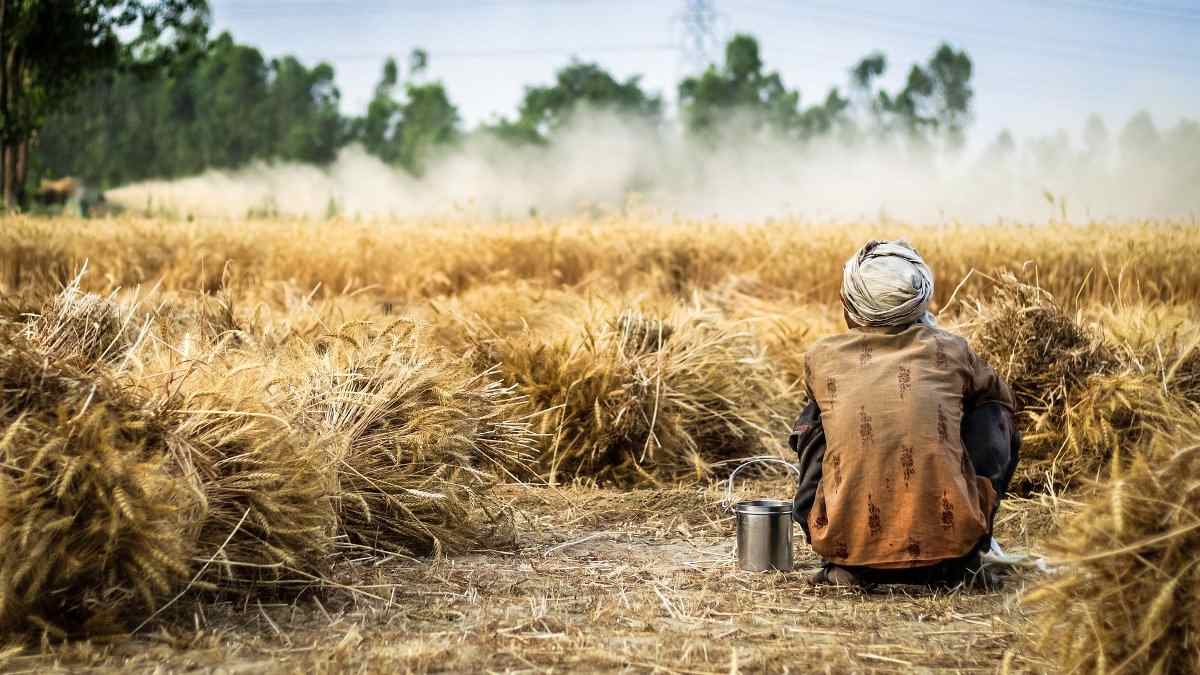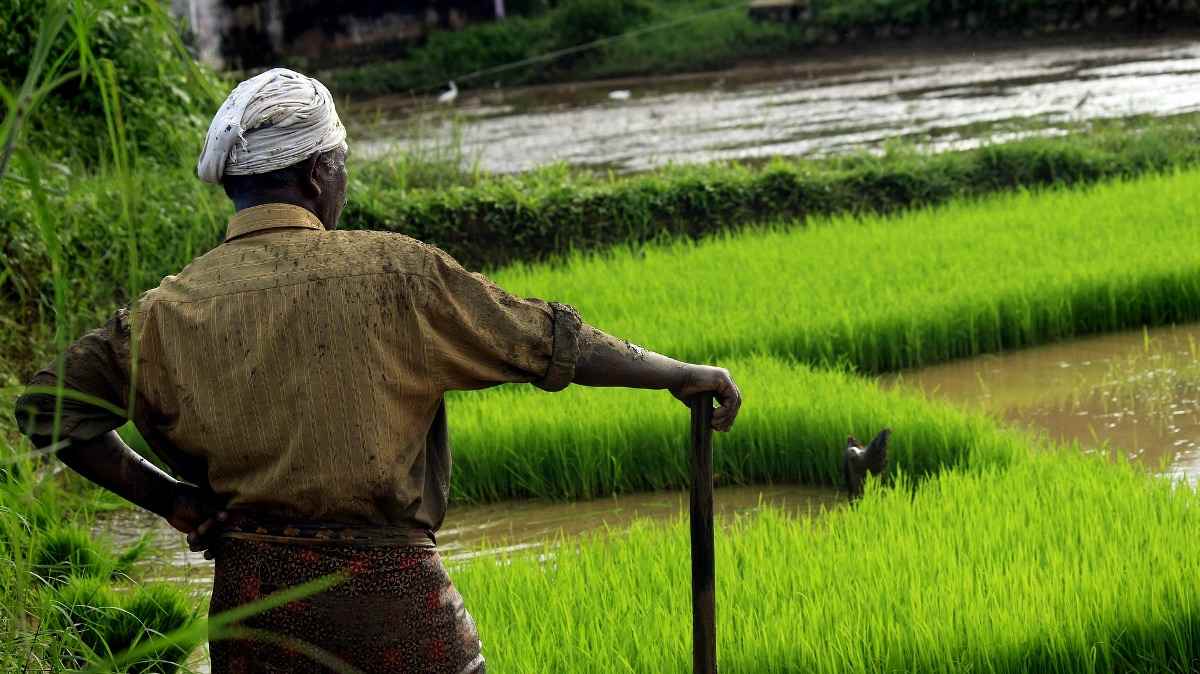Introduction to Problems faced by Indian farmers
Indian agriculture is being plagued by several problems. These problems, directly and indirectly, affect the life of a farmer. Indian farming practices and other activities of agriculture consume time as well as the efforts of a farmer. The problems faced by Indian farmers go unnoticed in the entire process of extracting food and harvesting crops. The main problems facing Indian agriculture are;
- Uncertainty in the water supply
- Lack of remunerative income
- Fragmentation of land holdings
- Lack of access to formal credit and also insurance
- Allied infrastructure (market access and storage facilities)
A guide to problems faced by Indian farmers

Prevailing problems of Indian farmers
The inadequacy of farm equipment is a handicap in the lives of farmers and modern technology has adapted the needs of modern farming practices. If they are trained in using this equipment, the lives of farmers can develop significantly. Implementation of the equipment is essential. Hence, a team of professionals must be appointed for these farmers for the welfare of the agricultural division of the economy. On the other hand, ignorance of farmers can hinder their successful agriculture and crop harvesting practices.
For instance, if a farmer wants to harvest 10 types of mustard, then know the maturity period of the crop. There are certain facts about crop yielding, harvesting, and agricultural sectors. If farmers get familiar with the information related to advanced agricultural procedures and safety measures, they can get rid of various problems.
List of several problems faced by Indian farmers
Loss of agricultural land
The main problem facing the agriculture sector is the loss of agricultural land because as more land is lost, it will become more difficult to produce the amount of food required to feed the growing human population. When discussing the area of land, the term hectare is used, and this term is a unit of area that is equivalent to 10,000 square meters, or around 2.5 acres.
Lack of infrastructure in the agriculture sector
The major problem responsible for low agricultural productivity is that the soil is contaminated by the increasing level of river and canal pollution which is mainly caused by high industrial effluents and toxic metals day by day. Soil erosion which is one of the significant causes of land degradation is also taking place at a rapid pace by ravine and gully formation, waterlogging, and shifting cultivation. Inappropriate use of fertilizers and pesticides causes a lack of nutrients in the soil that are necessary for healthy agricultural productivity. India lacks a modernized infrastructure for promoting agriculture.
Duplicate seeds
The seed is a basic input for attaining higher crop yields and sustained growth in agricultural production. Distribution of assured quality seed is as critical as the production of seeds. Good quality seeds are out of reach of the majority of farmers, particularly small and marginal farmers mainly because of exorbitant prices of better seeds.
To solve this problem, the Government of India established the NSC (National Seeds Corporation) in 1963 and the SFCI (State Farmers Corporation of India) in 1969. Thirteen State Seed Corporations (SSCs) were established to augment the supply of improved seeds to the farmers. High Yielding Variety Programme (HYVP) was launched in 1966-67 as the main thrust plan to increase the production of food grains in the country.
The Indian seed industry had exhibited impressive growth in the past and is expected to give further potential for growth in agricultural production. The role of the seed industry is not only to produce an adequate quantity of quality seeds but also to achieve varietal diversity to suit different agro-climatic zones of the country.
Manures, fertilizers, and biocides
Indian soils have been used for growing crops over thousands of years without caring for replenishing. This has led to depletion and exhaustion of soils resulting in low productivity. The average yields of almost all the crops are among the lowest in the world. This is a serious problem that can be solved by using manures and fertilizers.
Manures and fertilizers play the main role with soils as good food with the body. Just as a well-nourished body is capable of doing any good job, a well-nourished soil is capable of giving good crop yields. It has been estimated that about 70 percent of plant growth in agricultural production can be attributed to increased fertilizer application. So, an increase in the consumption of fertilizers is a barometer of agricultural prosperity. The practical difficulties in providing sufficient manures and fertilizers in all parts of a country. And, cow dung provides the best manure to the soils.
But its use as such is limited because much of cow dung is mainly used as kitchen fuel in the shape of dung cakes. Reduction in the supply of firewood and increasing demand for fuel in the rural areas due to the increase in population has complicated the problem. Chemical fertilizers are costly and are beyond the reach of the poor farmers. Then, the fertilizer problem is, therefore, both acute and complex.
Irrigation problems
The irrigation-agriculture helped to enhance agricultural production and ensured more income to the Indian farmers. Compare to the pre-irrigation period a significant majority of the farmers’ income has increased but due to several hurdles, farmers are not able to get income that commensurates with expenditure.
The main issues and challenges in the irrigation sector in India are as follows;
- Rainfall and Water availability has huge Regional Imbalance in India
- Farmers suffer from Sub-optimal utilization of created facilities
- India’s Irrigation Efficiency is very poor
- We have a faulty Groundwater Policy
- Competing demand for water is increasing rapidly
- Overexploitation of surface water leading to some drainage problems
- Water Resources Face challenges from Climate Change
Lack of mechanization
In case if you miss this: Organic Apple Farming, Cultivation Practices.

Mechanization is a crucial input for agricultural crop production and has been neglected in the context of developing countries. Increasing levels of agricultural mechanization do not necessarily mean big investments in tractors and other machinery. Farmers need to select the appropriate power source for any operation depending on the work to be done and on who is performing it. Women play an important role in farming based communities, and in some countries, up to 80 percent of the total farm labor comes from women. Then, this implies that power sources need to be adapted to such necessities from an ergonomic, social, cultural, and economic point of view.
Little or no use of machines is made in plowing, seed sowing, irrigating and pruning, weeding, harvesting, and transporting the crops. This is the case with small and marginal farmers. It results in huge wastage of human labor and low crop yields per capita labor force. There is an urgent need to mechanize the agricultural operations so that wastage of labor force is avoided and farming is made convenient.
Soil erosion
Soil erosion is a gradual procedure that occurs when the impact of water or wind detaches and removes soil particles, causing the soil to deteriorate. Soil deterioration and low water quality due to erosion and surface runoff have become problems worldwide.
Large tracts of fertile land suffer from erosion by wind and water. This area should be properly treated and restored to its original fertility.
Agricultural marketing
Agricultural marketing plays a main role not only in stimulating production and also consumption. Its dynamic functions are of main importance in promoting economic development. It has been described as an important multiplier of agricultural development.
- Optimization of Resource use and Output Management
- Increase in Farm Income
- Widening of Markets
- Growth of Agro-based Industries
- Price Signals
- Employment
- Addition to National Income
Agricultural marketing is important in the creation of the various types of utility-like form utility, place utility, time utility, and possession utility.
Major problems of agricultural marketing
- Too Many Intermediates
- Defective Weights and Scales
- Illiteracy and Lack of Unity among Farmers
- Lack of Financial Resources
- Lack of Organised Marketing System
- Lack of Transport Facilities
- Lack of Store Houses
- Lack of Standardization
- Lack of Awareness of the Market
- Corrupt Policies of the ‘Mandis’
- Distress Sale
- Lack of Market Intelligence
- Lack of Organization
- Poor quality of product
- The problem of Produce collection
Scarcity of capital
Agriculture is an important industry and like all other industries, it requires capital. The role of capital input is more and more important with the advancement of farm technology. Agricultural sector marketing continues to be in bad shape in rural India. In small villages, the farmers sell their produce to the moneylender from whom they usually borrow money.
Inadequate transport
One of the major handicaps with Indian agriculture is the lack of cheap and efficient means of transportation. Even at present, there are lakhs of villages which are not well connected with roads or with market centers.
Inadequate transport is one of the handicaps with post-harvest issues. The lack of a rural agriculture market and unorganized linking of villages leads to wastage of the produce. Proper management would benefit the farmers economically and feed the ones in need.
Illiteracy and lack of awareness about recent developments in the field of agriculture, and the poor socio-economic background of the farmers are some of the fundamental reasons for continuously decreasing agricultural productivity. Inadequate finance, untimely finance, and inconsistent policies of government have aggravated farmers’ problems severely.
Problems faced by farmers during the lockdown period
You may also check this: Hydroponic Farming Business Plan, Hydroponic Yield.

The major problem faced by the agriculture sector in the lockdown is the fleeing of farmers to their homes due to the fear of the pandemic. Lockdown extension is a burden to the agriculture sector. Even with the bumper harvest, farmers facing problems due to various restrictions. India’s ongoing lockdown to control the spread of pandemic is threatening agriculture as it overlaps with the time of harvest. Farmer leaders and agriculture experts criticized the relief package announced by the Indian government to aid farmers impacted by the pandemic. They expressed fear that once the lockdown is lifted the crash in prices would severely impact the income of millions of farmers.
The pandemic lockdown will adversely affect the agriculture and farmers in India. The agriculture sector is facing a lot of trouble with laborers and movement of the farm produced goods. Talking about ground reality, even if agriculture is exempted from lockdown directives, policemen are creating problems. Recently due to heavy rain, India’s agriculture faced disruptions and crop damage. And now it is facing another hit due to disruptions formed by the pandemic.
As Rabi harvest season approaches, farmers are worried about standing crops as how to harvest. Several farm machines are not available for crop harvesting. Indian farmers growing wheat, mustard and pulses already got their crops damaged due to untimely heavy rainfall recently.
In the case of Rabi crops, such as wheat, and including Mustard, Potato, Chickpea, Jowar, Soya, Paddy, and other crops, the harvest has been impeded due to the lockdown for different reasons. Availability of labor, lack of family labor, availability of machines, practicing physical distance, and fear of police have emerged as the main hurdles in the harvest of rabi crops across the states in India. Another problem faced by the agriculture sector in the lockdown is the fleeing of farmers to their homes due to the fear of the pandemic. Our food production depends on the availability of human resources, farm inputs, and free movement of agricultural produce. And all these are restricted at this time due to lockdown and these problems will lead to weak food production and high food price inflation. Also, if this continues for more days, food production can decrease later this year.
The farm economy faced a severe hit when lockdown halted transportation, thus stagnating the harvest. Also, the unavailability of migrant laborers, intercepting the harvest and post-harvest crop operations. The pandemic has given rise to some challenges in procurement operations as well. That apart, the sale of dairy products such as milk, and egg, etc is also facing problems. This is because of various operational restrictions.
As a result, the cultivators and related professionals lose their income while facing the wrath of unemployment. Accordingly, small and marginal farmers, landless farm laborers, small and medium-sized enterprises (SMEs) dependent on raw materials from agriculture, and so on experience extreme challenges. Therefore, the government is striving to provide alternative revenue until the economy falls back into its place.
With Rabi harvest approaching in some states, the farmers have to get back to work amid lockdown. For instance, Mustard, the second most crucial Rabi crop that needs manual harvesting, and without migrant laborers that becomes a problem. Also, lentil, maize, and chilies follow closely.
Additionally, its sugarcane peak season and it requires manual planting in the north. Therefore, in this peak harvest season, farmers tend to sideline the global criticality. Therefore, to keep both in check that is farmer’s welfare and lockdown, the government sets the parameters. Owing to the unlikely rains, farmers delayed their crop harvest. In the case of horticulture, mango is due at the fruiting phase and farmers are taking adequate precautions to prevent the spread of infection. Also, for rice fallows, the cultivators should adapt whitefly management to avoid yellow mosaic virus incidence.
That’s all folks about problems faced by our Indian farmers. We wish them good luck and hope their lives become better in the coming days!. You may also check this: How to Make Money From a Vegetable Farming.
super